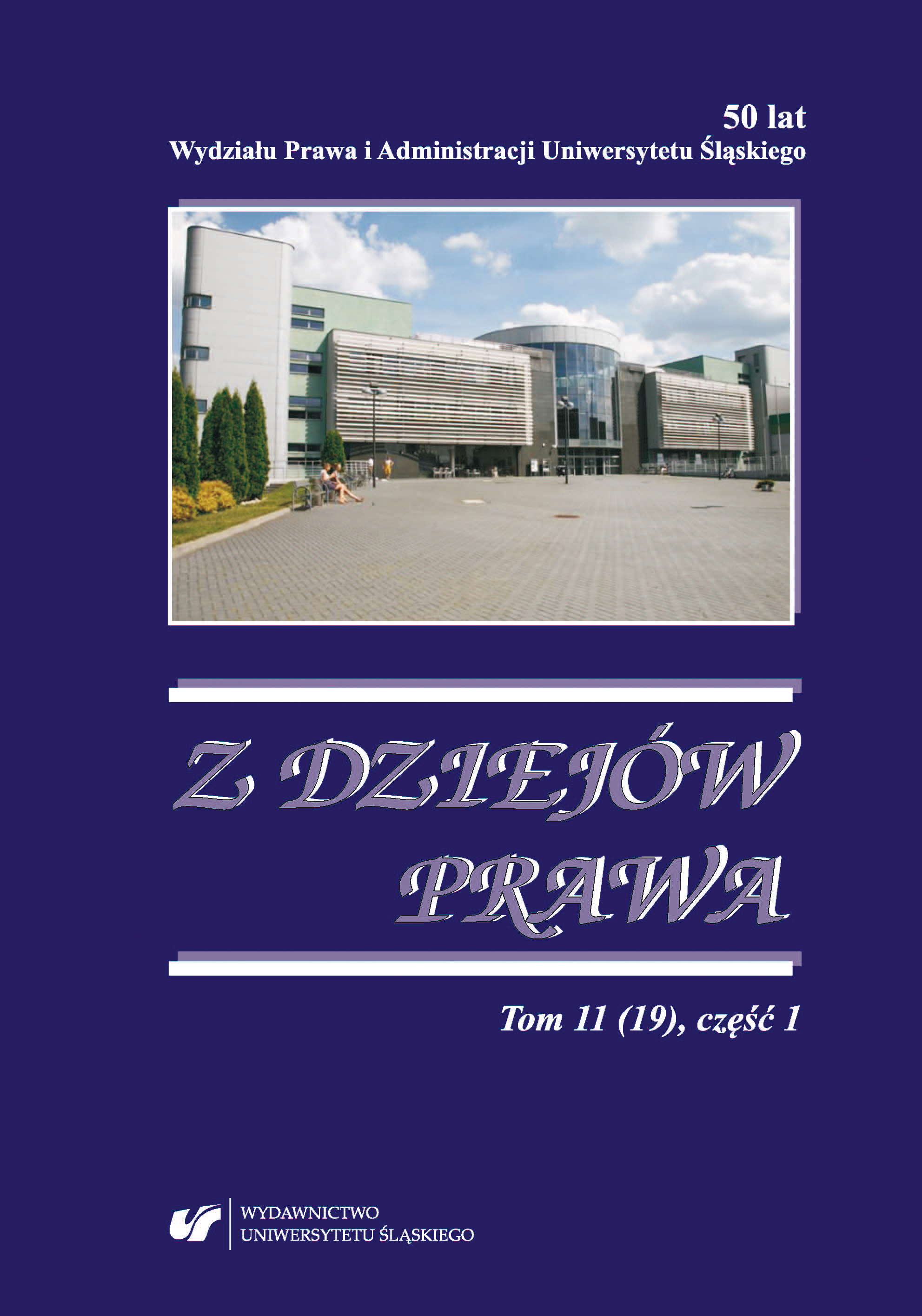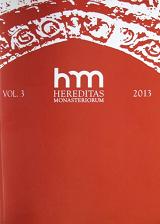

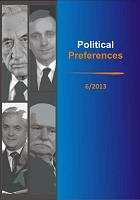
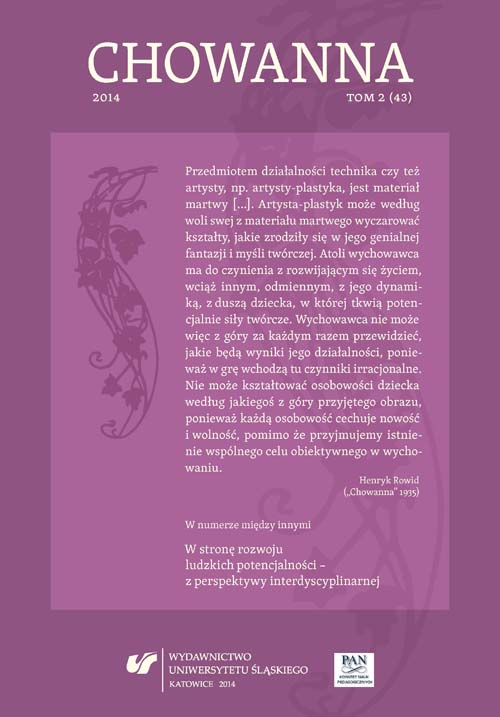
Keywords: non-conformists constructive and apparent; personality; generation
The primary objective of this paper is to diagnose two types of nonconformists: constructive and apparent in three generations of Poles. Research shows that among non-conformists you can often find in generation 70 and 90 non-conformists constructive than apparent. In generation 80 can meet more often among men non-conformist constructive than women.
More...
Marek Mazurkiewicz - Colloquium Opole 2014. 10 lat razem w Unii Europejskiej. Zagrożenia i szanse Paweł Malendowicz - Społeczne oblicza Europy XXI wieku Mariusz Menz - Edukacja polityczna w Polsce i w Niemczech. Historia, wyzwania, perspektywy Marta Götz - Walny Zjazd Członków Stowarzyszenia Instytut Zachodni Witold Nowak - Jubileusz 70-lecia Instytutu Zachodniego Jadwiga Kiwerska - Wystawa poświęcona 70-leciu Instytutu Zachodniego Hanka Dmochowska - Europejska Nagroda Obywatelska – European Citizen`s Prize 2014
More...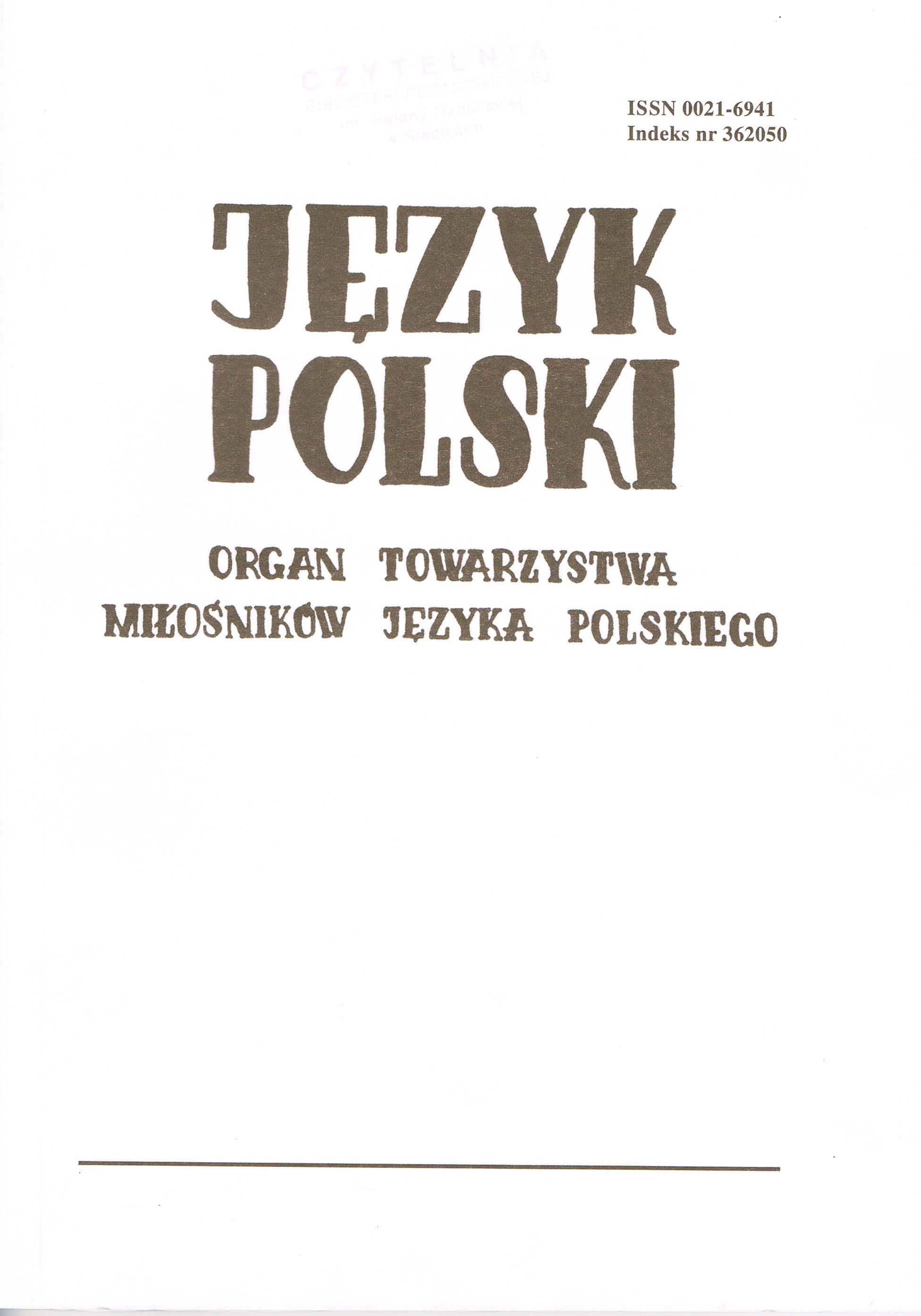
Keywords: Polish stylistics after 1989; varieties of Polish; functional stylistics; pragmatic stylistics; cognitive stylistics
In the first part of the article the author describes some of the major theoretical approaches relating to the stylistic differentiation of the post-war Polish language. The author finally concludes that the multiplicity of the so-far presented models makes it impossible to adopt a uniform typological scheme of the stylistic differentiation of contemporary Polish. In the following parts of the article the author presents in a reporting manner the most significant accomplishments of Polish post-1989 linguistics in the field of research on particular stylistic variants of Polish, focusing especially on the studies devoted to the following styles: colloquial, scientific, artistic, official (formal), religious and public spoken (rhetoric).
More...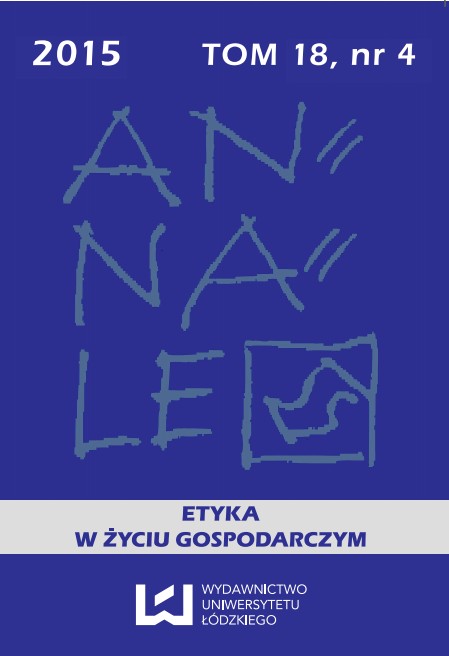
Keywords: banking; great world religions; cultural differences;
The article is dedicated to the attitude of the great world religions (Judaism, Christianity, Islam, Buddhism, Hinduism and Confucianism) to the world of finance, including banking. The issue of usury plays a key role together with the evolution of ethical aspects related to obtaining compensation for money lending. The analysis is focused on the other aspects of banking activities, such as saving, investing, and institutional development of the banking sector as well. The author underlines the far-reaching convergence between religions in this area, in spite of the considerable variation in historical and geographical conditions of their formation. The importance of cultural (religious) differences, including the nuances or more fundamental aspects, has a significant impact on bank management in different regions. For successful development, large multinational corporations have to take into consideration the abovementioned circumstances, regardless of globalization processes.
More...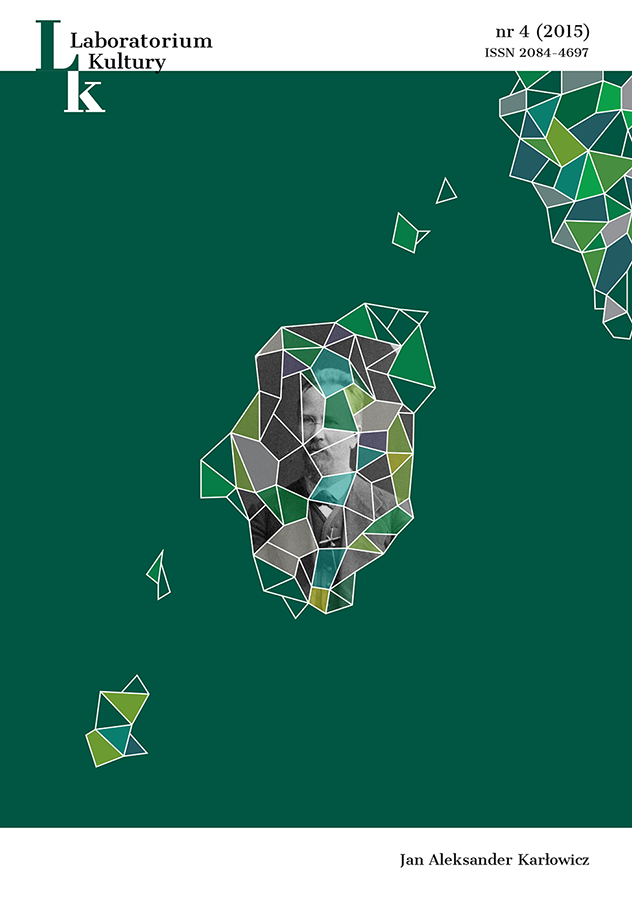
Keywords: Don Karlos; Jan Aleksander Karłowicz; Szkoła Główna
Opublikowana w roku 1867 monografia Don Karlos, królewicz hiszpański należy do najrzadziej przywoływanych dzieł Jana Karłowicza. Wzmiankom o niej towarzyszy niekiedy informacja, że na podstawie tego opracowania autor bezskutecznie starał się o stanowisko docenta w Szkole Głównej w Warszawie. Artykuł jest próbą przybliżenia zasadniczych tez propozycji Karłowicza, oraz przyczyn, dla których taka interpretacja dziejów hiszpańskiego infanta nie spotkała się z uznaniem ówczesnych czytelników.
More...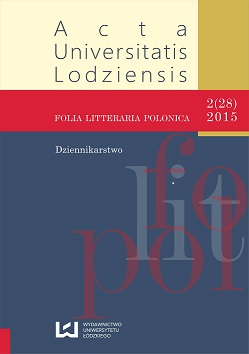
Keywords: journalistic novel; reportage novel; journalism and the novel; interwar Polish novel; nonfiction; Jalu Kurek
The paper focuses on genealogical aspects of three interwar novels by Jalu Kurek – Andrzej Panik, Grypa szaleje w Naprawie, Woda wyżej) – which have often been described by critics as “reportage novels”. The author examines the past critical reception of the novels and the intentio auctioris. The main goal of the article is to suggest a more capacious genealogical term: the journalistic novel.
More...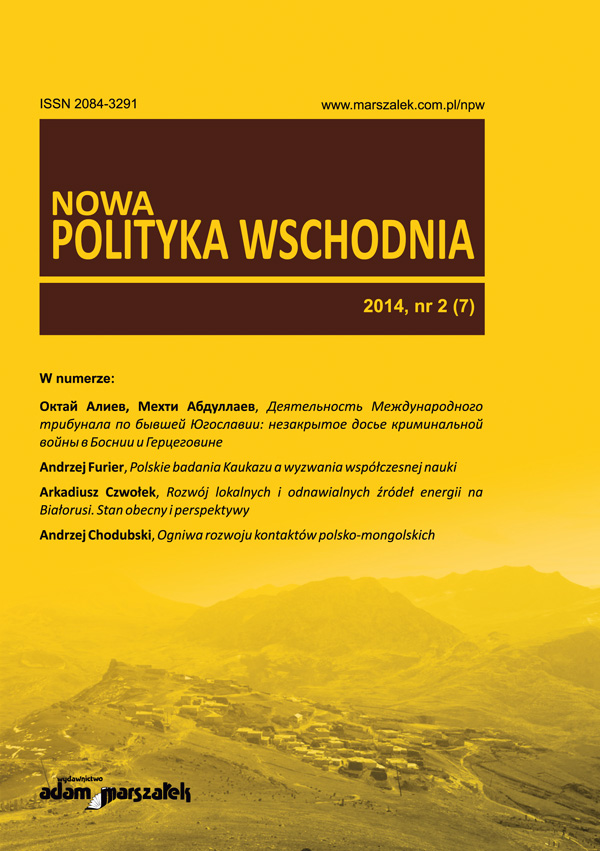
Keywords: Mongolia;Poles;international relations;political culture;consciousness of transition;Poles;international relatios;political culture;consciousness of transition
The article points out that: 1)The Polish-Mongolian and Mongolian-Polish contacts devloped rapidly after the World War II as a consequence of the international cooperation of the so-cialist states. 2)Science and education were particularly important factors. 3)Poles significantly contributed to the cultural and civilization transformation of Mongolia, including the spheres of construction, industry, and agriculture. 4)Memories of the Polish-Tatar contacts still remain in the collective conscious-ness of Poles; the negative image of a community which destroys the cultural achievements of conquered peoples has formed. 5)The contemporary knowledge about Mongolia and Polish-Mongolian rela-tions is largely shrouded with a mist of myths and stereotypes.
More...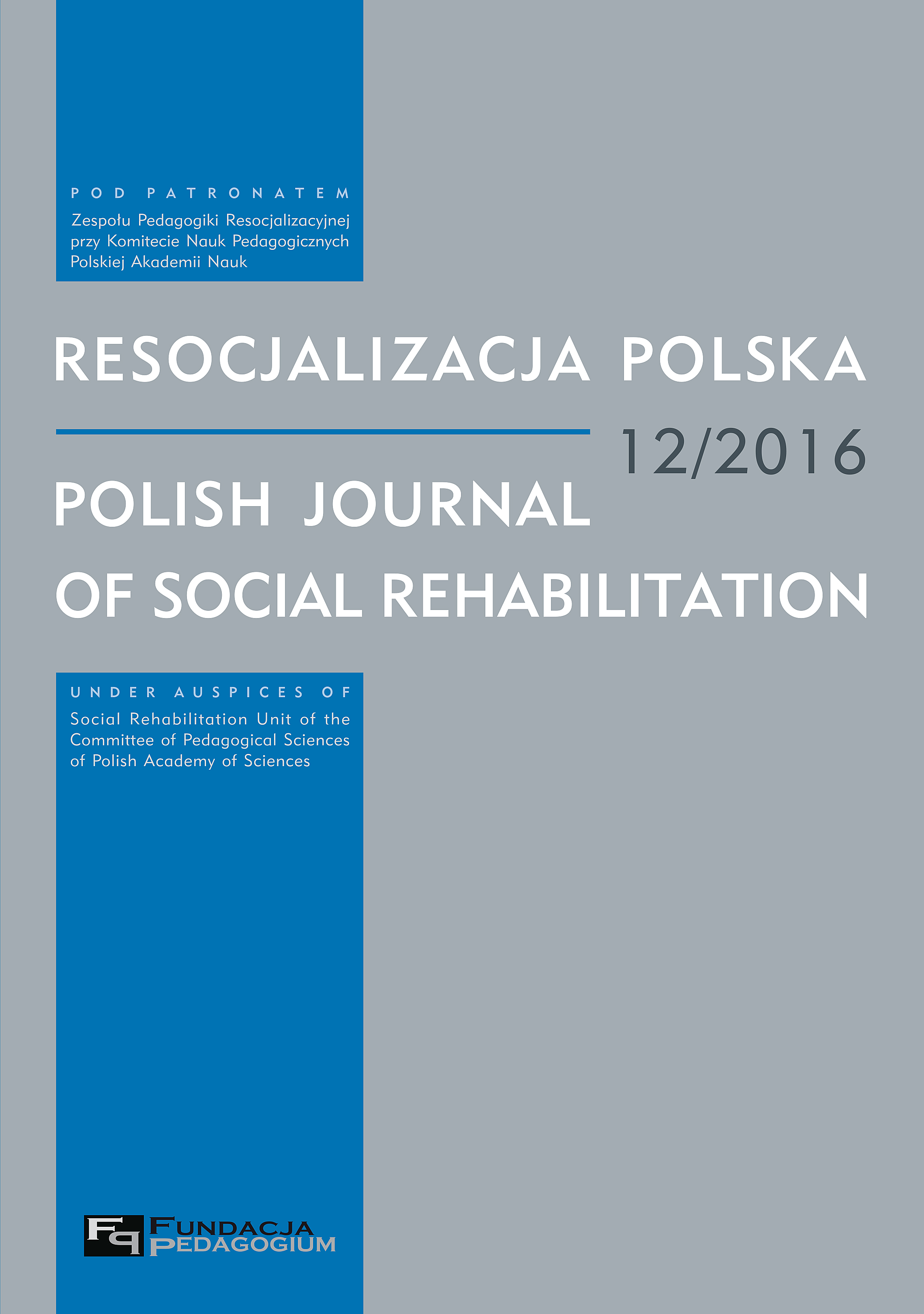
Keywords: psychopatia; agresja; wrogość; wartości
Zaprezentowane badanie miało na celu określenie nasilenia cech psychopatii u kobiet przebywających w polskich zakładach karnych oraz zależności pomiędzy nim a warunkami socjalizacji rodzinnej, stylem funkcjonowania interpersonalnego, nasileniem i formami przejawianej agresji oraz hierarchią uznawanych przez nie wartości. Grupa badawcza liczyła 99 kobiet, spośród których wyłoniono trzy grupy nasilenia cech psychopatycznych (opierając się na wynikach uzyskanych w Skali Obserwacyjnej Skłonności Psychopatycznych – PCL-R). Zastosowano takie narzędzia diagnostyczne jak: Skala Agresji (SABD), Skala Ustosunkowań Interpersonalnych (SUI), Skala Wartości Rokeacha (SW), analiza akt penitencjarnych, ankieta i dane z wywiadu. Badanie pokazało, iż wraz ze wzrostem nasilenia cech psychopatycznych w badanych grupach rosła liczba kobiet mających w swej przeszłości doświadczenia przebywania w placówkach opiekuńczych lub opiekuńczo-wychowawczych oraz kontaktu z rodzicem uzależnionym od alkoholu. Zgodnie z przewidywaniami okazało się, iż badane grupy różnią się pod względem przejawianych form agresji (zwłaszcza agresji fizycznej i słownej) oraz irytacji, a także stylów funkcjonowania interpersonalnego. Częściowe potwierdzenie znalazła również hipoteza mówiąca o istnieniu związku pomiędzy hierarchią wartości a nasileniem cech psychopatycznych. Kobiety o wyższym nasileniu cech psychopatycznych niżej ceniły wartość bezpieczeństwa rodziny w swojej hierarchii wartości ostatecznych.
More...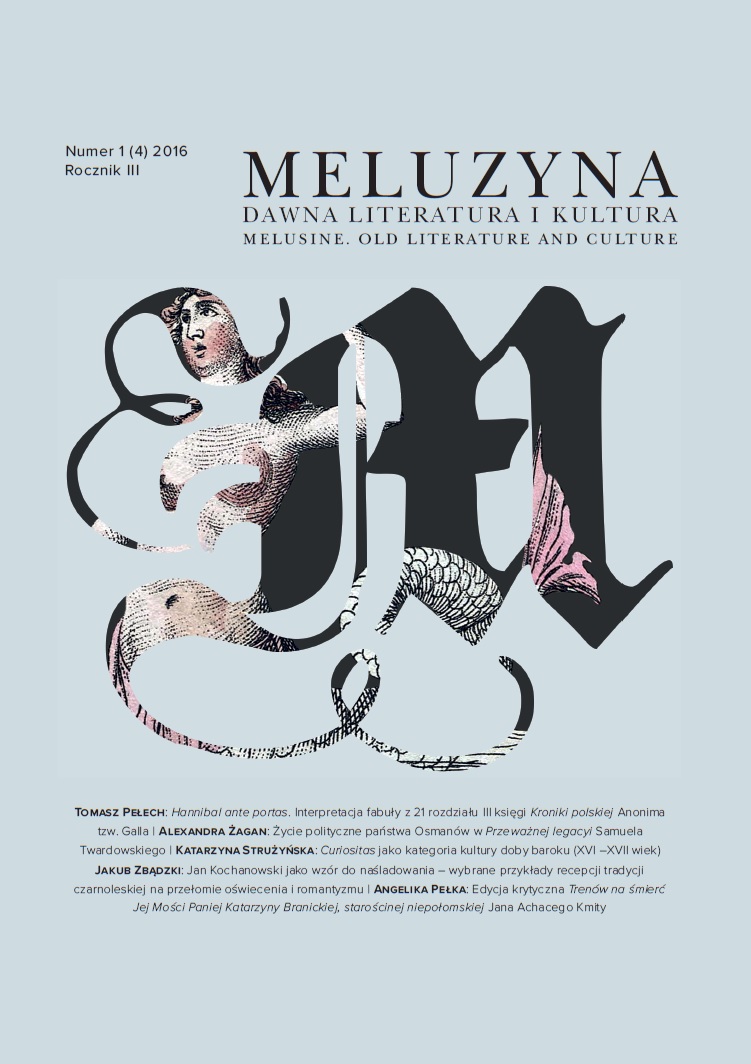
Keywords: Jan Kochanowski; model; formations; Classicism; Sentimentalism; Romanticism
The paper aims at identifying the reasons for which Jan Kochanowski is considered a role model to follow to the writers at the turn of the Enlightenment and Romanticism eras. It includes the analysis of selected works by four representative poets: Julian Ursyn Niemcewicz, Kazimierz Brodziński, Adam Mickiewicz, and Teofil Lenartowicz, with the last two serving as reference figures. The paper shows a clear dependency between the presentation of Kochanowski’s poetry and his persona and the literary tendencies of the given time: Classicism, Sentimentalism, and Romanticism. The author emphasis the fact that the poets not only refer to the Renaissance predecessor, but also take on the roles of his descendants. This phenomenon may be interpreted asa symptom of rivalry between the poets and, more broadly, as an attempt to take over the bases of the Classicist formation by the Romantic formation.
More...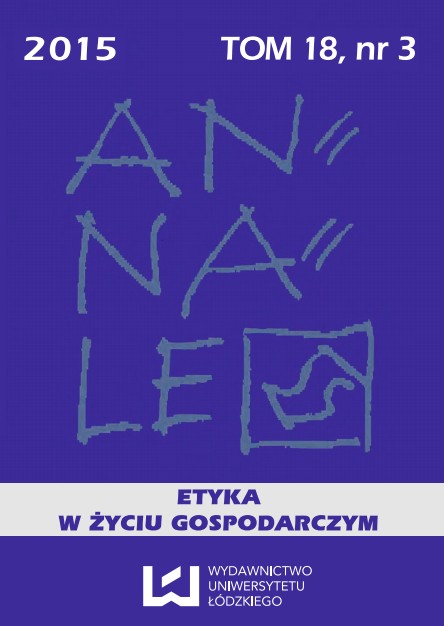
Keywords: banking; great world religions; cultural differences
The article is dedicated to the attitude of the great world religions (Judaism, Christianity, Islam, Buddhism, Hinduism and Confucianism) to the world of finance, including banking. The issue of usury plays a key role together with the evolution of ethical aspects related to obtaining compensation for money lending. The analysis is focused on the other aspects of banking activities, such as saving, investing, and institutional development of the banking sector as well. The author underlines the far-reaching convergence between religions in this area, in spite of the considerable variation in historical and geographical conditions of their formation. The importance of cultural (religious) differences, including the nuances or more fundamental aspects, has a significant impact on bank management in different regions. For successful development, large multinational corporations have to take into consideration the above-mentioned circumstances, regardless of globalization processes.
More...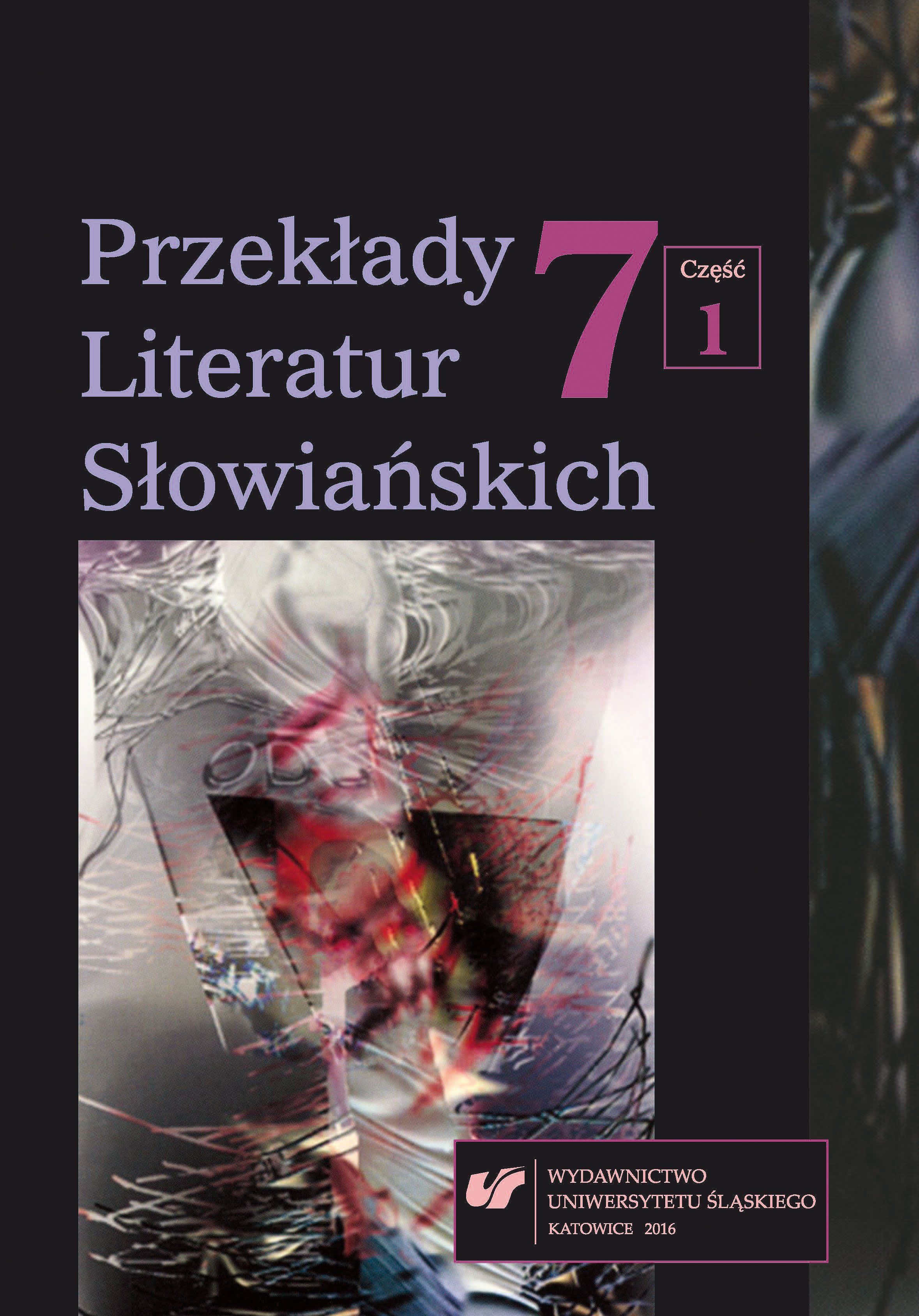
Keywords: translation; Slovak literature in Polish translation; Danuta Abrahamowicz; Polish
The author of the article focuses on the specific school of translation formulated by the well‑known Polish translator of Slovak literature, Danuta Abrahamowicz. The article defines all aspects of Abrahamowicz’s translatological activities, starting with her literary studies, critical, publishing, editorial activity and ending with her translation activity. The article shows the ways in which Abrahamowicz perceives translation and how it applies in a new horizon of reception.
More...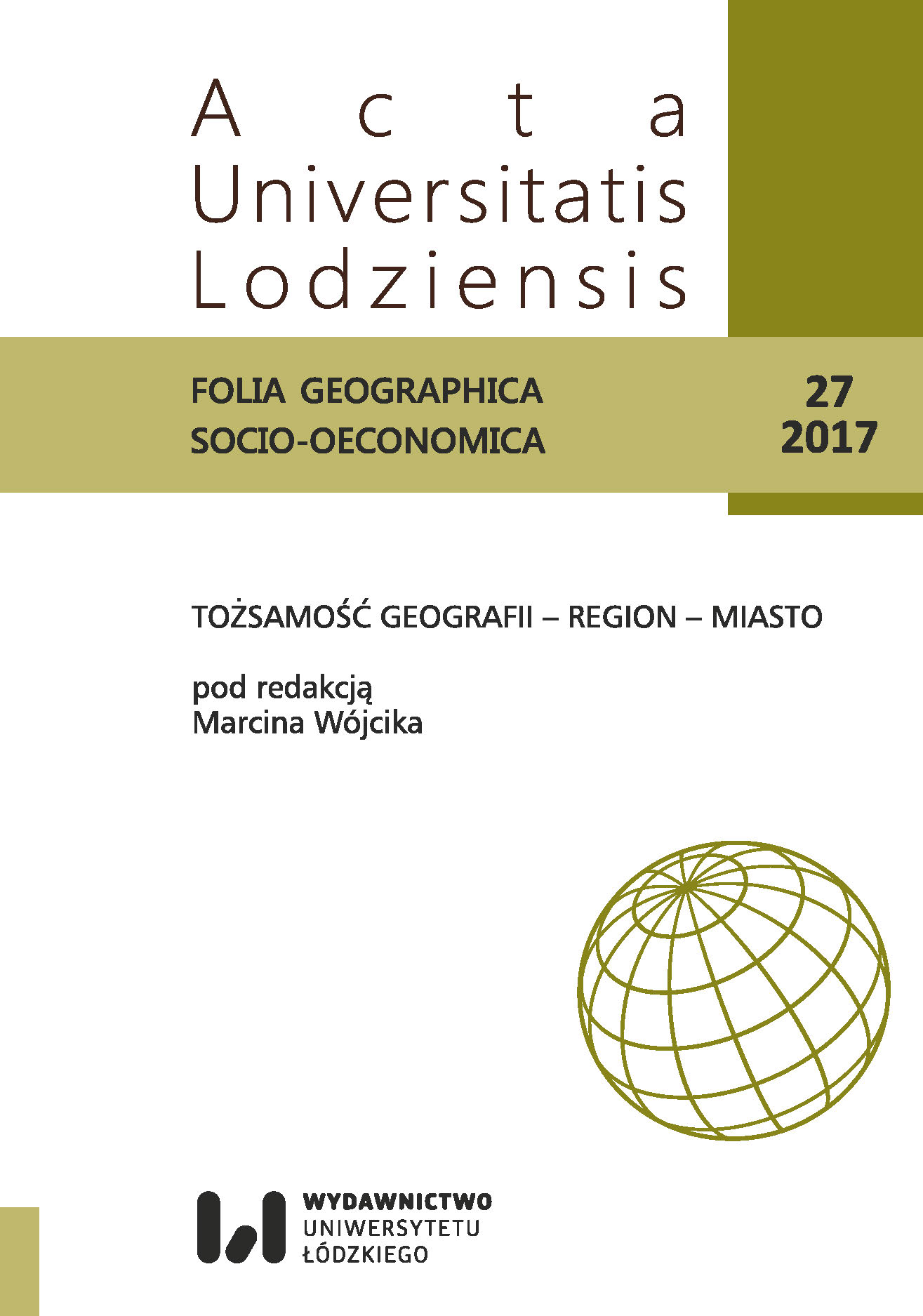
Keywords: Geography; geographers; teachers of geography; geographic conventions;
The last before the war, 8th Convention of Polish Geography Teachers, the only at that time nationwide forum for the exchange of geographical ideas, took place on 28–29 May 1939 at the Institute of Geography of the Jagiellonian University. The organizer was the Polish Association of Geography Teachers chaired at that time by Professor Stanisław Pawłowski, the director of the Institute of Geography of the University of Poznan. Each convention had an extensive educational part, and all the events were accompanied by cartographic exhibitions and those featuring teaching aids. The main lecture under the title „Geography and national defence” was delivered by Professor S. Pawłowski. In it, he characterized in a comprehensive way Polish defensive conditions. Another speech at the plenary session concerned Cieszyn Silesia. It was delivered by Dr. Antoni Wrzosek, the deputy director of the Silesian Institute. The remaining part of the Convention was devoted to educational matters. Participants also had the opportunity to visit a specially prepared cartographic exhibition, and that featuring the latest teaching aids. The Convention proceeded in a feverish atmosphere. Preparations for a probable war with Germany were under way everywhere.
More...![“Seals of Deep Slumber.” World of wonders in Zaklęte miasto [Enchanted City] by Edward Leszczyński](/api/image/getissuecoverimage?id=picture_2016_34225.jpg)
Keywords: dream; city; circle; strangeness; life; monotony; dance; Dionisian-ness;
The article offers an analysis and interpretation of the poem Zaklęte miasto [Enchanted city] from the volume Ballady i pieśni [Ballads and songs] by the Young Poland poet Edward Leszczyński. The poem is first analysed based on the oneiric convention. For this purpose the author refers to the philosophy of Arthur Schopenhauer and explains the symbolism of the wheel, which indicates the sense of entrapment in the world, a situation with no way out. The dreaming-wandering from Leszczyński’s poem, the gaining and losing of faith, is then examined in the context of August Strindberg’s A Dream Play. The two works, ostensibly so different, address with a similar kind of poetic “dreaming.” In both cases, the life in question is inauthentic, asleep, affected by a curse, kept under a spell. The last stanza of the poem indicates the Dionysian tradition, and therefore makes it necessary to refer to the philosophy of Friedrich Nietzsche and his idea of eternal return. The examination lead to the conclusion that Leszczyński’s work refers to the dual meaning of circularity, or rather two attitudes towards life. In the first case Schopenhauerian determinism is revealed, according to which life is a monotonous, enchaining, ominous dream. In the second case we are dealing with the worship life of Nietzschean provenance – one may, therefore, conclude that a curse can be a blessing and being asleep can be being awake, if we accept the eternal return.
More...
Keywords: spoiled identity; autostigmatization; autoidentification; stigma;
New media is a space in which neuroatipical individuals can exist. They can articulate their subjectivity and construct their identity. The analysis of the webblogs of people who define themselves as Asperger Syndrome diagnosed shows how either individual or collective identity is forming. Bloggers describing their everyday life show their perspective, which is not available to neurotipical (NT) people. Thanks to online memoirs, attempts can be made to reconstruct their identity projects and analysis of adaptation strategies.
More...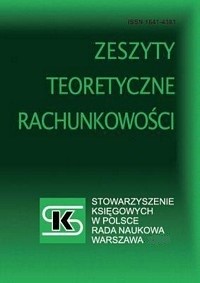
Keywords: integrated report; financial reporting; non-financial reporting; financial information; non-financial information
The main aim of the article is to attempt to classify the integrated report as a financial or non-financial report by analyzing its information content. The article also aims to determine how the form of the integrated report was changing and what relations existed between this type of report, the financial statement and the management report in 2013–2016. The research conclusions were based on analysis of integrated reports published by companies listed on the Warsaw Stock Exchange in the years 2013–2016. Reports were collected from the websites of the surveyed companies. As part of the study, it was found that there was no uniform form and scope of this report, although results of the research confirmed that it was a report containing mainly non-financial information. Financial information occurred occasionally or didnot occur at all. Additionally, it should be emphasized that most non-financial information is original information that only appears in this report.
More...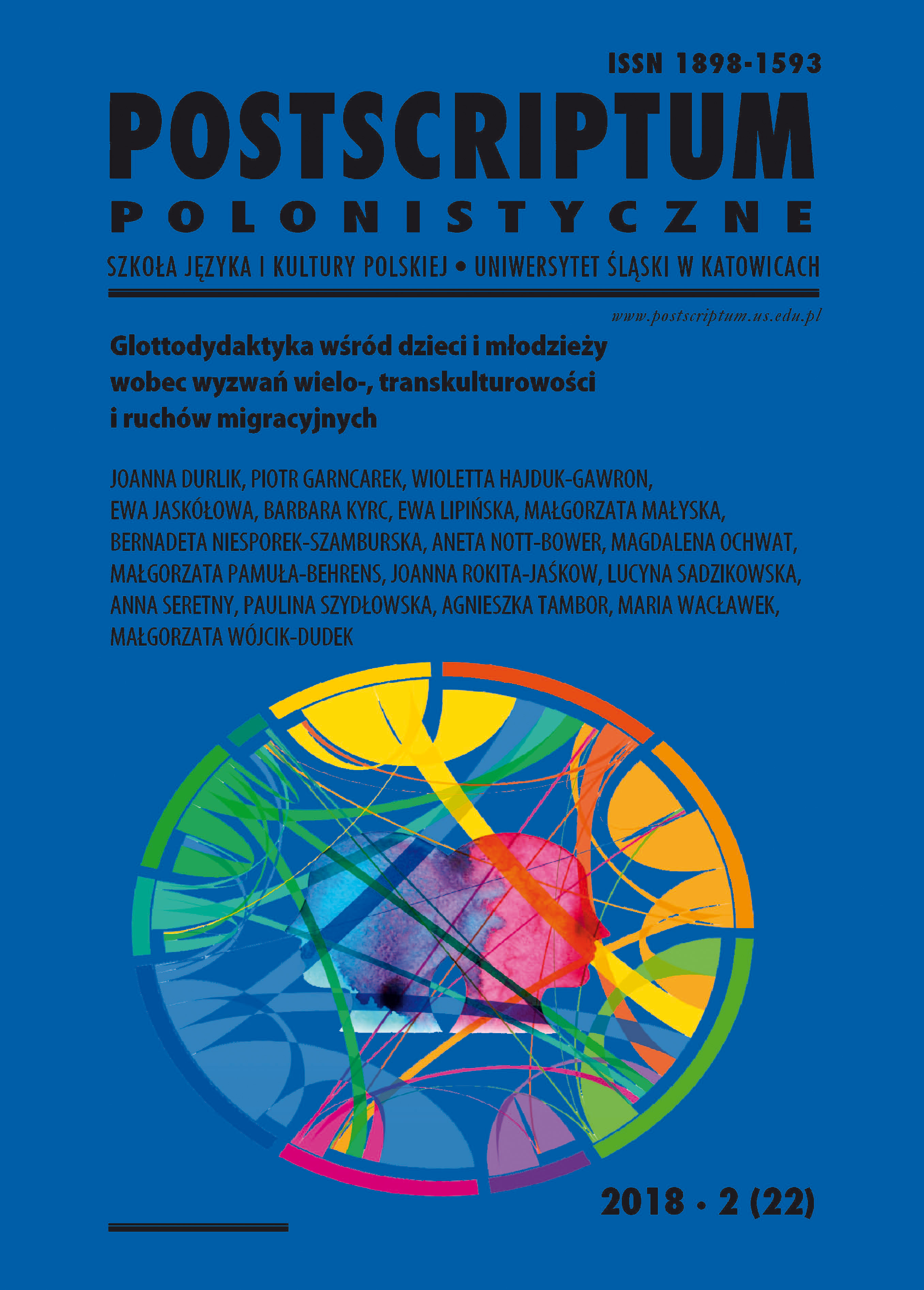
Keywords: adaptation; foreign students in Poland
The article is based on the research conducted at Silesian schools concerning the position and functioning of foreign students as well as the ones coming back from emigration in the Polish educational system. The article author analyses the adaptation mechanisms of the students and parents with migrant experiences as well as the needs of the receiving communities. The analysis is based on the material gathered through the conducted survey.
More...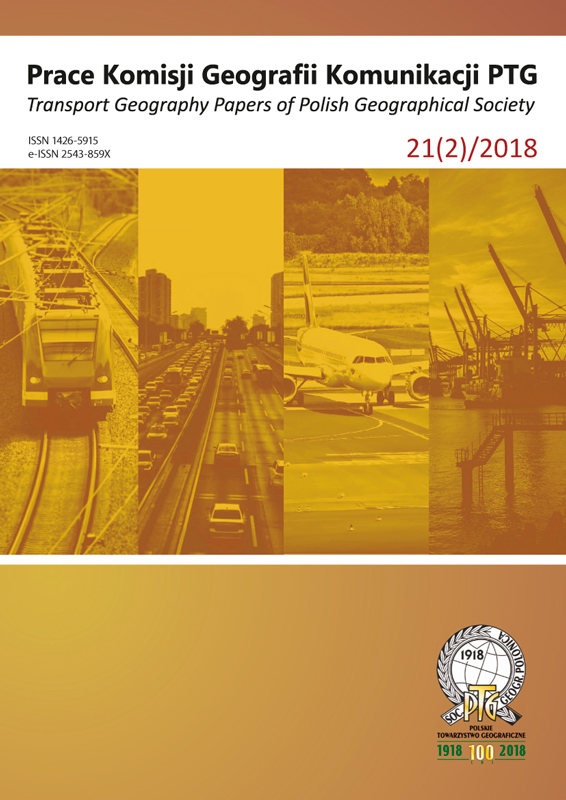
Keywords: accessibility; Katowice conurbation; public transport; spatial development; tram transport;
The subjects of the research is tram network in Katowice conurbation. This conurbation is a big polycentric region where condition of the tram transport operation is different than in big monocentric agglomeration. The article assumes if the spatial arrangement of the conurbation is polycentric, then polycentric is also a structure of tram network. It was hypothesized that in a tram network are several smaller subnetworks. They are mostly predisposed to the implementation of local transportation needs. Therefore, tram transport has only little impact in integration between parts of conurbation. Based on historical factors and topological properties of network it was divided to smaller subnets. Subnets differ in terms of infrastructure. Accessibility to tram service was examined using landscape ecology ideas – “patch-corridor-matrix.” Areas well served and excluded from service were indicated. Analyzed was also arrangement of tram lines and frequence of courses – with emphasis on connections between another subnets. The hypothesis were confirmed, but the studies showed that the role of tramway communication is spatially diverse. Some parts of conurbation are well integrated and in another parts – trams realize only local journey.
More...